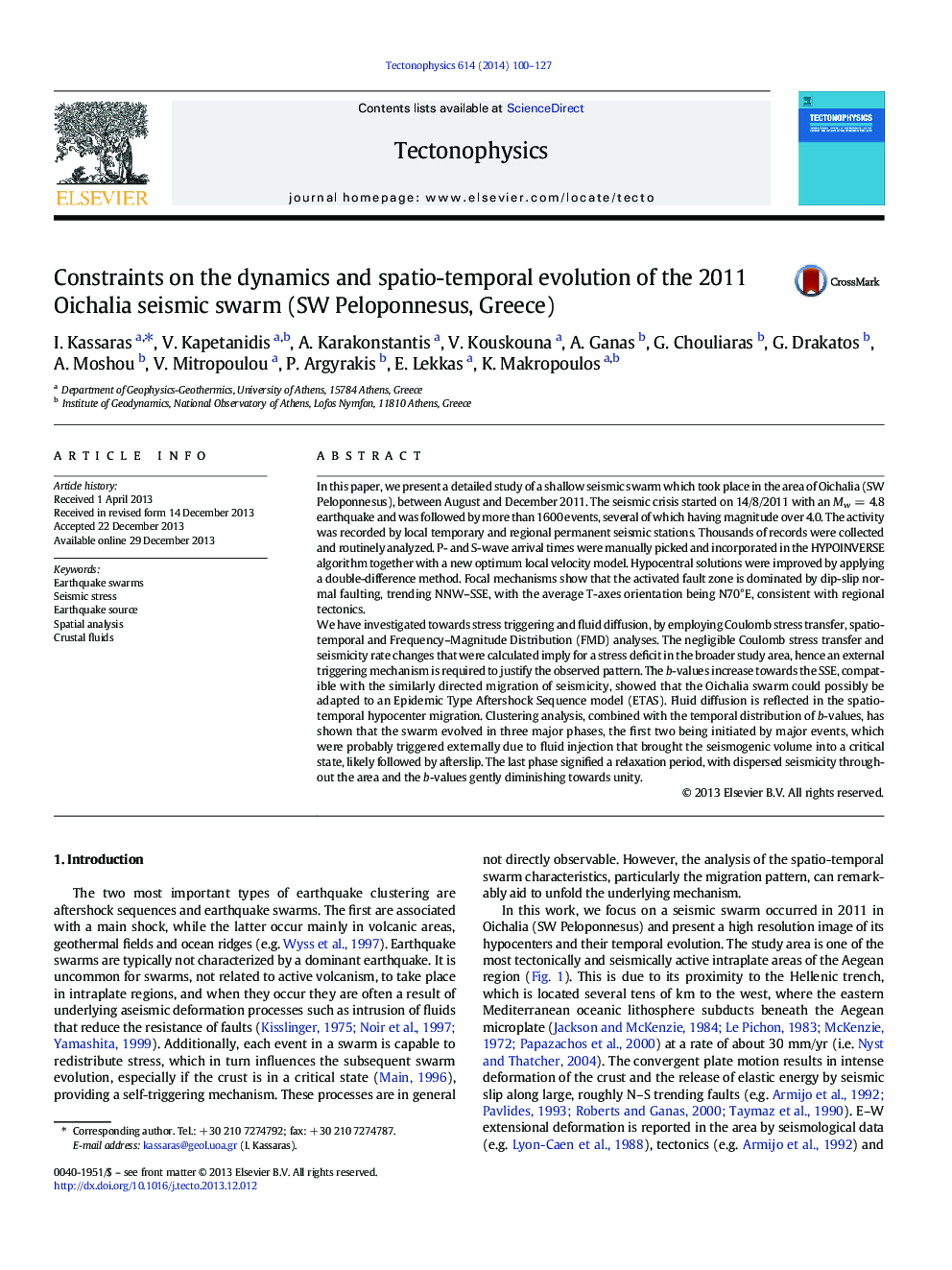| Article ID | Journal | Published Year | Pages | File Type |
|---|---|---|---|---|
| 4692095 | Tectonophysics | 2014 | 28 Pages |
Abstract
We have investigated towards stress triggering and fluid diffusion, by employing Coulomb stress transfer, spatio-temporal and Frequency-Magnitude Distribution (FMD) analyses. The negligible Coulomb stress transfer and seismicity rate changes that were calculated imply for a stress deficit in the broader study area, hence an external triggering mechanism is required to justify the observed pattern. The b-values increase towards the SSE, compatible with the similarly directed migration of seismicity, showed that the Oichalia swarm could possibly be adapted to an Epidemic Type Aftershock Sequence model (ETAS). Fluid diffusion is reflected in the spatio-temporal hypocenter migration. Clustering analysis, combined with the temporal distribution of b-values, has shown that the swarm evolved in three major phases, the first two being initiated by major events, which were probably triggered externally due to fluid injection that brought the seismogenic volume into a critical state, likely followed by afterslip. The last phase signified a relaxation period, with dispersed seismicity throughout the area and the b-values gently diminishing towards unity.
Related Topics
Physical Sciences and Engineering
Earth and Planetary Sciences
Earth-Surface Processes
Authors
I. Kassaras, V. Kapetanidis, A. Karakonstantis, V. Kouskouna, A. Ganas, G. Chouliaras, G. Drakatos, A. Moshou, V. Mitropoulou, P. Argyrakis, E. Lekkas, K. Makropoulos,
